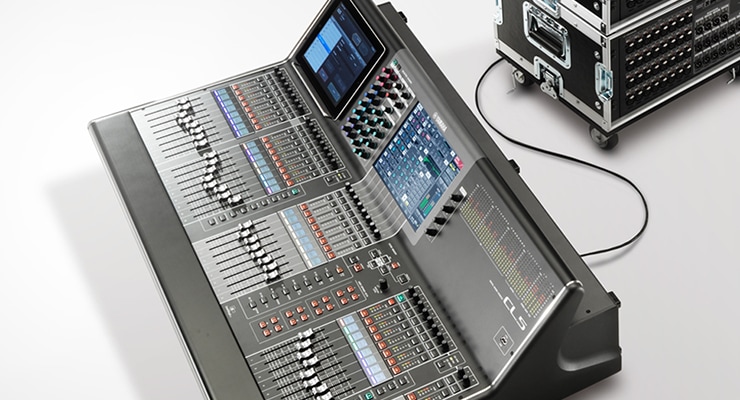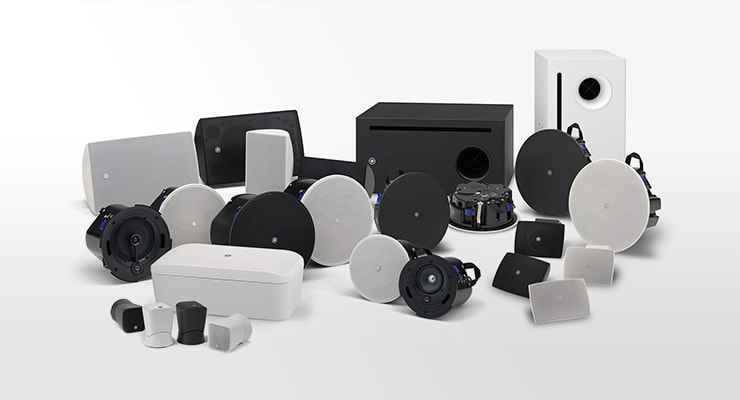Better Sound for Commercial Installations
Part 3: Mixers and Processors

07. Feedback Control - Using a Feedback Suppressor
In the hands of sound professionals, equalizers can be effective tools for combating feedback. But in facilities where experienced personnel are not always available it may be wiser to employ other means. The reasons and solutions are discussed below.
Equalizing for Feedback Can Be tricky
In an ideal world the procedure described in "Feedback Control - Using an Equalizer" would be straightforward and simple to employ. In reality the complexity of acoustics can cause unexpected problems. It can be difficult to locate the precise feedback point, for example, and inexperienced operators often respond by attenuating too many bands, resulting in thin, power-deficient sound. Inappropriate equalizer settings can also degrade the sound's intelligibility. The feedback might stop, but the quality of the sound might suffer as well. Equalization for feedback control is best left to an experienced pro.
Feedback Can Occur Unexpectedly
Feedback control is usually taken into account when designing, installing, and tuning a commercial sound system, but it can still occur suddenly even if the most careful preventative measure have been taken. One situation in which feedback is likely to occur is where a presenter is moving around with a hand-held microphone and the microphone is brought too close to a speaker system. Another potential feedback cause is when the sound system volume is increased to compensate for a soft-spoken presenter.
If an experienced operator is present the feedback can be manually eliminated on the spot, but full-time personnel of this type are rare in meeting room and lecture hall facilities, for example, and in many cases the presenter will not know how to deal with a sudden outburst of feedback from an unfamiliar sound system. Also, if the system is prone to feedback the presenter will not be able to relax and concentrate fully on the presentation, and that will reduce the usefulness and appeal of the facility.
Let an Automatic Feedback Suppressor Do the Work
We know that feedback can be difficult to eliminate, and that it can occur suddenly even if preventative measures have been taken, so what do we do? Digital signal processing provides us with an effective solution in the form of the "feedback suppressor" function. This advanced function will automatically locate the feedback point with reliability and precision, and automatically make the adjustments necessary to prevent feedback without adversely affecting the sound.
Feedback suppressor functions can detect potentially troublesome frequency peaks in the room and make necessary adjustments before the system is actually used, and they can monitor the system during use and make real-time adjustments as necessary.
Automatic feedback suppression of this type offers two main benefits. The first is that digital technology allows precise detection of the feedback point so that sound degradation is minimized, and the second is that automated operation means that the sound system can be used with confidence without the need for full-time professional support.
Automatic feedback suppression is included in the Yamaha EMX5016CF powered mixer, the IMX644 digital installation mixer, and DME series digital mixing engines. The suppression effects vary somewhat for each system, but all provide reliable feedback suppression for a wide variety of commercial installations.

(Figure: Yamaha products with built-in feedback suppression (from left to right: EMX5016CF, IMX644, DME series))
Isn't digital audio technology wonderful! Even tricky tasks such as feedback control can be implemented as automatic functions that allow users to concentrate more on the program material and less on system operation. There are more functions that digital technology has made easier than ever, and we'll discuss some of them in the next section.
Contents
The sound systems that broadcast the information you're hearing have been carefully designed and installed to suit the needs of each individual facility.
This series offers information aimed at achieving the best possible sound in commercial installations, from the basics to equipment selection and day-to-day operation.








